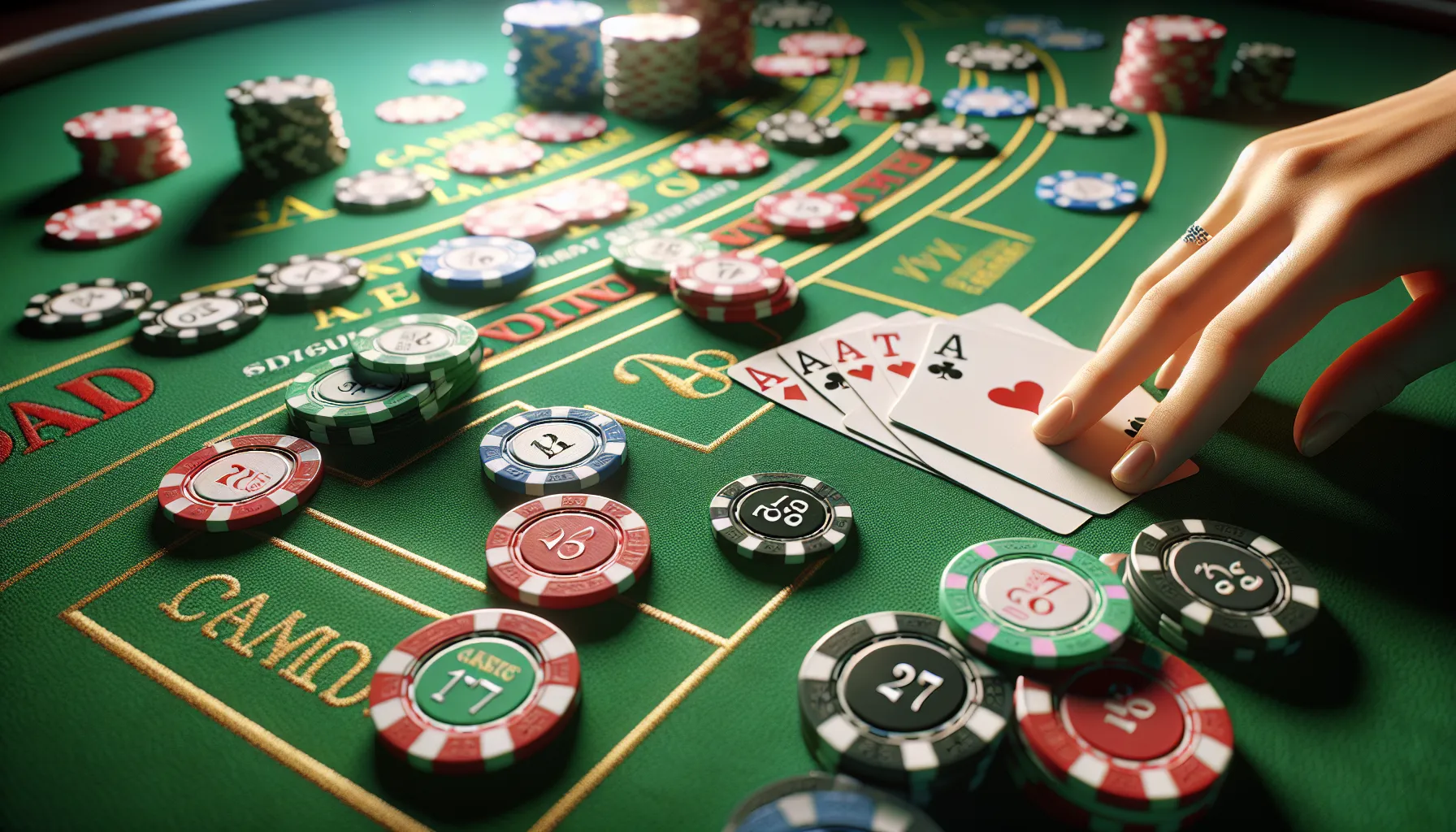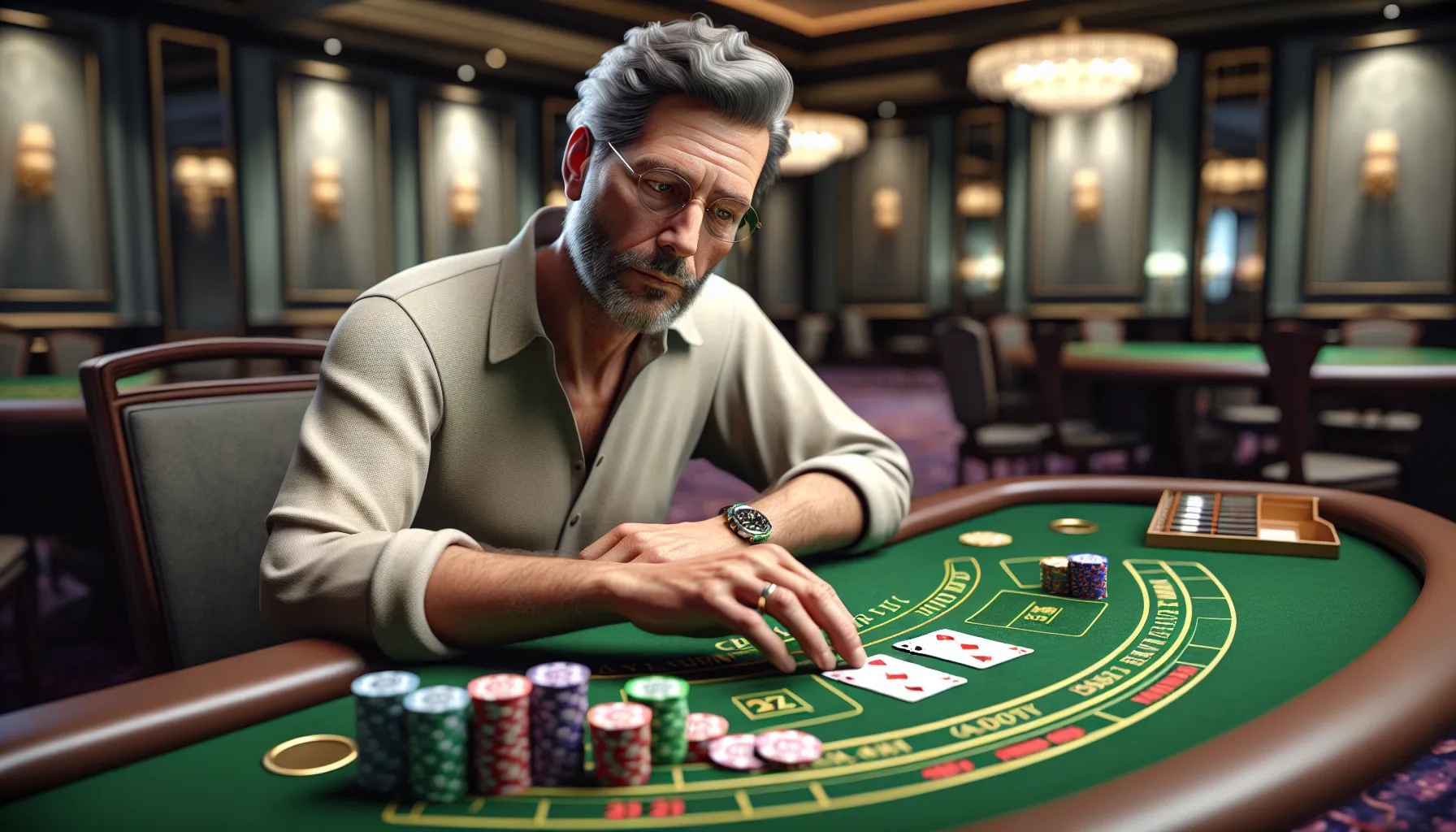Key Takeaways
- A soft 18 in blackjack refers to any hand totaling 18 where an Ace is counted as 11, offering flexibility since the Ace can switch to a value of 1 to prevent busting.
- Soft vs. hard hands: Soft hands include an Ace valued as 11, while hard hands either lack an Ace or require it to be counted as 1, making soft hands more adaptable.
- Key soft 18 examples include Ace-7, Ace-3-4, or Ace-2-5, demonstrating the role of the Ace in creating strategic flexibility.
- Optimal strategies for soft 18: Hit against a dealer showing 9, 10, or Ace, stand against a 2, 7, or 8, and double down when facing a dealer’s 3 through 6.
- Common mistakes include overvaluing soft 18 as a strong hand and failing to adapt strategies based on specific dealer rules, such as hitting on a soft 17 table.
- Effective mastery of soft 18 relies on studying strategy charts and practicing with simulations to enhance decision-making and confidence at the blackjack table.
Blackjack’s one of those games that’s easy to pick up but tricky to master, especially when it comes to understanding terms like “soft 18.” I remember the first time I heard it—I had no clue what it meant, but it sounded important. If you’ve ever been in the same boat, don’t worry; you’re not alone.
A soft 18 isn’t just a random phrase; it’s a key concept that can make or break your strategy at the table. It’s all about how certain card combinations give you more flexibility in your decisions. Once you get the hang of it, you’ll feel way more confident in your gameplay. Let’s dive into what makes a hand “soft” and why 18 is such a big deal.
Understanding Blackjack Basics
Blackjack combines strategy and chance, making it essential to grasp key concepts like “soft” and “hard” hands. Recognizing these terms helps players make better decisions during gameplay.
What Is A Soft Hand?
A soft hand includes an Ace valued as 11 without exceeding a total of 21. For instance, Ace-7 is a soft 18 because the Ace enhances flexibility by switching between 11 and 1. This adjustability prevents accidental busts while allowing strategic moves.
Difference Between Hard And Soft Hands
A hard hand either has no Ace or has an Ace counted as 1. For example, 10-8 is a hard 18 since no Ace is present, while Ace-7 remains soft due to the Ace’s dual value. Hard hands are rigid in value, increasing bust risks if hit, whereas soft hands reduce risk and allow aggressive strategies without severe penalties.
What Is A Soft 18 In Blackjack?

A soft 18 in blackjack refers to a hand totaling 18 where an Ace is counted as 11. This hand gives more flexibility since the Ace can switch to a value of 1 to avoid busting.
Defining A Soft 18
A soft 18 consists of an Ace valued as 11 paired with another card giving a total of 18. The “soft” designation indicates the hand’s adaptability, as the Ace shifts to a 1 if adding additional cards pushes the total over 21. This flexibility makes soft 18 a strategic opportunity, especially when considering the dealer’s visible card.
Examples Of Soft 18 Hands
- Ace-7: The most common example, this hand totals 18 with the Ace counted as 11. Drawing doesn’t risk immediate busting.
- Ace-3-4: This combination also counts as a soft 18, with the Ace providing leeway to adjust its value if needed.
- Ace-2-5: Similar to Ace-3-4, this sequence highlights how the inclusion of an Ace creates a soft hand while maintaining strategic flexibility.
Strategies For Playing A Soft 18

A soft 18 offers flexibility in blackjack, but optimal play depends on the dealer’s card and the table’s rules. I use various strategies for hitting, standing, or doubling down to maximize advantages.
When To Hit
I hit on a soft 18 when the dealer shows 9, 10, or Ace. These cards indicate a strong dealer hand, making it risky to rely on 18 as a winning total. Adding another card while keeping the Ace’s flexibility improves the chances of forming a stronger hand.
When To Stand
I stand on a soft 18 when the dealer’s card is 2, 7, or 8. These cards usually signify a weaker or balanced hand, and staying at 18 increases the potential for the dealer to bust or finish below my total. Standing avoids unnecessary risks in these scenarios.
Situations To Double Down
I double down with a soft 18 when the dealer shows a 3 through 6. These cards are known as weaker upcards, and doubling down magnifies my returns in situations where the dealer is more likely to bust. By committing more, I capitalize on the favorable odds provided by the dealer’s limitation.
Common Mistakes With A Soft 18

Soft 18 is a versatile hand, but misunderstanding its nuances leads to costly errors. Many players end up misplaying this hand due to confusion about dealer rules or overvaluing its strength in various situations.
Misunderstanding Dealer Rules
Failing to consider dealer rules creates poor decisions with a soft 18. In blackjack, the dealer must hit on 16 or lower and stand on 17 or higher in most versions. However, some tables require the dealer to hit on a soft 17. Playing a soft 18 similarly across all tables without checking this rule creates a strategic disadvantage.
For example, if the dealer hits on a soft 17, they have a higher chance of improving their total. In these cases, standing on a soft 18 against a 7 or 8 might be less effective. Adapting decisions based on specific dealer rules avoids unnecessary losses.
Overvaluing A Soft 18
Believing soft 18 is a “strong” hand often results in errors. While it provides flexibility, it’s still vulnerable against stronger dealer upcards like 9, 10, or Ace. Assuming it’s always sufficient to stand in these situations ignores the likelihood of the dealer building a higher hand.
For instance, standing against a dealer’s 10 when holding Ace-7 misses opportunities to improve the total, especially when hitting carries no risk of busting. Recognizing that soft 18 isn’t always a winning hand leads to better decision-making and gameplay accuracy.
Tips For Mastering A Soft 18
Understanding and playing a soft 18 effectively in blackjack involves not only knowledge but consistent practice. I’ve found that practicing strategies and using tools can significantly enhance gameplay.
Memorizing Blackjack Strategy Charts
I use blackjack strategy charts to ensure my decisions align with mathematically proven odds. These charts provide specific actions—such as hit, stand, or double down—for every possible hand combination against the dealer’s upcard. Memorizing the sections specific to soft 18 is crucial. For example, I know to stand when the dealer has a 2, 7, or 8 and hit against a 9, 10, or Ace. By consistently referring to charts, I strengthen my decision-making without second-guessing.
Practicing With Simulation Games
I’ve improved my skills by practicing with online blackjack simulations. These games replicate real scenarios, helping me apply soft 18 strategies in a risk-free setting. For example, I practice doubling down when the dealer shows a 3 through 6, testing how often this action leads to better outcomes. Over time, these simulations reinforce my instincts and help eliminate hesitation during live gameplay.
Conclusion
Understanding a soft 18 can make a big difference in how you approach blackjack. It’s not just about knowing the rules but also about using the flexibility of a soft hand to your advantage. With the right strategies and a bit of practice, you can make better decisions and feel more confident at the table. Whether you’re playing online or in a casino, mastering soft 18 strategies will help you sharpen your gameplay and enjoy the experience even more.
Frequently Asked Questions
What is a soft 18 in blackjack?
A soft 18 in blackjack is a hand where an Ace is valued as 11 and combined with other cards to total 18. For example, Ace-7 is a common soft 18. The term “soft” indicates flexibility, as the Ace can switch to a value of 1 to avoid busting.
Why is a soft 18 important in blackjack?
A soft 18 is crucial because it offers flexibility and reduces the risk of busting. This hand allows players to adapt their strategy—deciding when to hit, stand, or double down based on the dealer’s card to maximize their chances of winning.
How is a soft hand different from a hard hand?
A soft hand includes an Ace valued as 11, like Ace-7, providing flexibility to adjust its value to 1 if needed. A hard hand has no Ace or uses an Ace as 1, like 10-8, which is less flexible and carries a higher risk of busting.
When should I hit on a soft 18?
Players should hit on a soft 18 when the dealer shows a strong upcard, such as 9, 10, or Ace. These cards indicate the dealer’s potential for a high total, making it advantageous to improve your hand.
When should I stand on a soft 18?
Standing on a soft 18 is recommended if the dealer’s upcard is 2, 7, or 8. These cards suggest the dealer has a weaker hand, so maintaining your current total may offer a solid advantage.
When should I double down on a soft 18?
Doubling down on a soft 18 is ideal when the dealer shows a 3, 4, 5, or 6. These cards, known as weak upcards, present a good opportunity to capitalize on favorable odds and increase your wager.
Is a soft 18 a strong hand in blackjack?
A soft 18 is a moderately strong hand, but its strength depends on the dealer’s upcard. It is not always safe to stand on a soft 18, especially against strong upcards like 9, 10, or Ace. Strategy adjustments are critical.
What mistakes do players commonly make with a soft 18?
Players often overvalue a soft 18 or fail to adapt to dealer rules, such as hitting on soft 17. Misjudging the dealer’s hand strength or neglecting the flexibility of a soft 18 can lead to poor decisions and missed opportunities.
How can I improve my strategy for playing a soft 18?
Use blackjack strategy charts to memorize optimal moves for a soft 18 in various situations. Practice with online simulations to reinforce these strategies in a controlled environment and build confidence for live games.
Why is practice essential for mastering soft 18 strategies?
Practice helps players familiarize themselves with strategy charts and develop instincts for gameplay. Online simulations allow risk-free experimentation, enabling you to refine decisions for scenarios where a soft 18 arises at the table.



